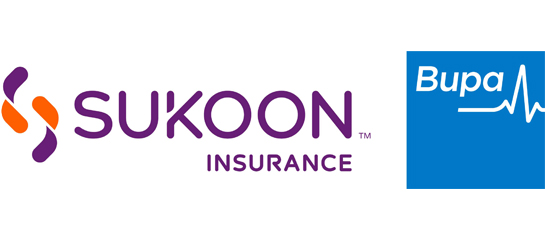Transforming the modern boardroom
Examining the future of leadership, highlighting why diversity and inclusion are essential for transforming the modern boardroom and driving meaningful change.

In today’s fast-moving world, the future of leadership is no longer about who sits at the table, it’s about who’s missing and why. Diversity and inclusion are not just checkboxes, they’re the foundation of leadership that truly reflects the world we live in.
According to the McKinsey & Company “Women in the Workplace 2023” report (1), 60% of companies have increased their financial and staffing investments in diversity, equity, and inclusion (DEI) over the past year.
Global companies have also made notable progress in promoting diversity and inclusion within leadership roles. As per the Grant Thornton “Women in Business 2024” report (2), women now hold 33.5% of senior management positions worldwide. The same commitment applies to widening representation overall. Research by WBR Insights and Traliant “How to build an effective DEI program” (3) states that 89% of companies have established formal DEI strategies, with an additional 11% planning to implement one within the next year.
Why inclusion is a better business strategy
This shift isn’t just about fairness, it’s about future-proofing success. Diverse teams bring different viewpoints to the table, leading to smarter ideas, boardroom innovation, bolder strategies and businesses that can adapt faster. They’re more in tune with shifting customer needs, consumption patterns, and cultural trends, which gives them an edge over competitors.
Post-pandemic, this edge has never been more critical. Businesses that harness diverse perspectives are the ones pushing boundaries, staying resilient, and growing stronger as the world changes.
Diversity for better mental health
A diverse workplace isn’t just good for business, it creates a culture where people feel seen, valued, and supported. This is especially important when it comes to mental health, both for individuals and across entire organisations.
“Post-pandemic, we have a unique opportunity to support a more inclusive workplace,” says Dr Mohamed Maan, Regional Head of Clinical Operations at Bupa Global. “When leadership reflects diverse perspectives, employees feel a sense of belonging, which boosts their confidence and mental well-being. This inclusivity not only enhances individual growth but also strengthens the entire organisation.” (4).
Breaking the glass ceiling
Despite progress, gender imbalance remains a persistent challenge in leadership roles. According to the FTSA Women Leader Review “Achieving Gender Balance” (5), women hold just 34.5 % of senior management positions, a modest increase from recent years, highlighting the slow pace of change at the top.
Even diversity initiatives struggle to bridge the gap. A report by Culture Amp “The state of DEI in 2024, key takeaways and insights” (6), shows a downward trend. In 2021, 71% of HR professionals reported that their organisation extends its DEI efforts beyond basic compliance. Last year, that number dropped to 60%.
This data underscores the need for actionable strategies and sustained commitment to diversity, equity, and inclusion (DEI) in the workplace. Beyond statistics, it calls for leadership accountability and meaningful cultural transformation to ensure every voice has a seat at the table.
Encouraging accessibility and flexibility
The pandemic turned the working world on its head, creating significant upheaval that paved the way for more inclusive and flexible workplaces. Bupa Global’s 2022 Executive Wellbeing Index (7), revealed that 89% of Senior Leaders reported experiencing mental health symptoms in the past year, emphasising the growing need for mental health support in professional settings. Equally concerning, over half (52%) of global leaders plan major career changes to improve their work-life-balance. These trends show the urgent need for organisations to adopt sustainable practices that prioritise employee well-being.
One solution is to offer hybrid working environments, which have brought tangible benefits while addressing some of these challenges. By removing geographical restrictions, companies can tap into diverse talent pools globally while employees gain greater flexibility to balance work with their lifestyles. An approach that directly supports mental health, reduces burnout and encourages long-term employee satisfaction.
The takeaway? Building diversity isn’t just about representation, it’s about creating spaces where people feel they belong, thrive, and take pride in being part of something bigger.
- McKinsey & Company “Women in the Workplace 2023”
https://www.mckinsey.com/featured-insights/diversity-and-inclusion/women-in-the-workplace-2023 - Grant Thornton “Women in Business 2024”
https://www.grantthornton.global/globalassets/1.-member-firms/global/insights/women-in-business/2024/grant-thornton-women-in-business-report-2024.pdf - WBR Insights and Traliant “How to build an effective DEI program”
https://www.traliant.com/wp-content/uploads/2022/08/Traliant_How-to-Build-an-Effective-DEI-Program-1.pdf - Mohamed Maan, Regional Head of Clinical Operations, Bupa Global. (2024). Interview/Statement.
- FTSA Women Leader Review “Achieving Gender Balance”
https://ftsewomenleaders.com/wp-content/uploads/2024/04/ftse-women-leaders-report-final-april-2024.pdf - Culture Amp “The state of DEI in 2024, key takeaways and insights”
https://www.cultureamp.com/blog/dei-2024-trends - Bupa Global’s 2022 Executive Wellbeing Index
https://www.bupaglobal.com/en/your-wellbeing/discover-bupa-global/bupa-global-launches-2022-executive-wellbeing-index







